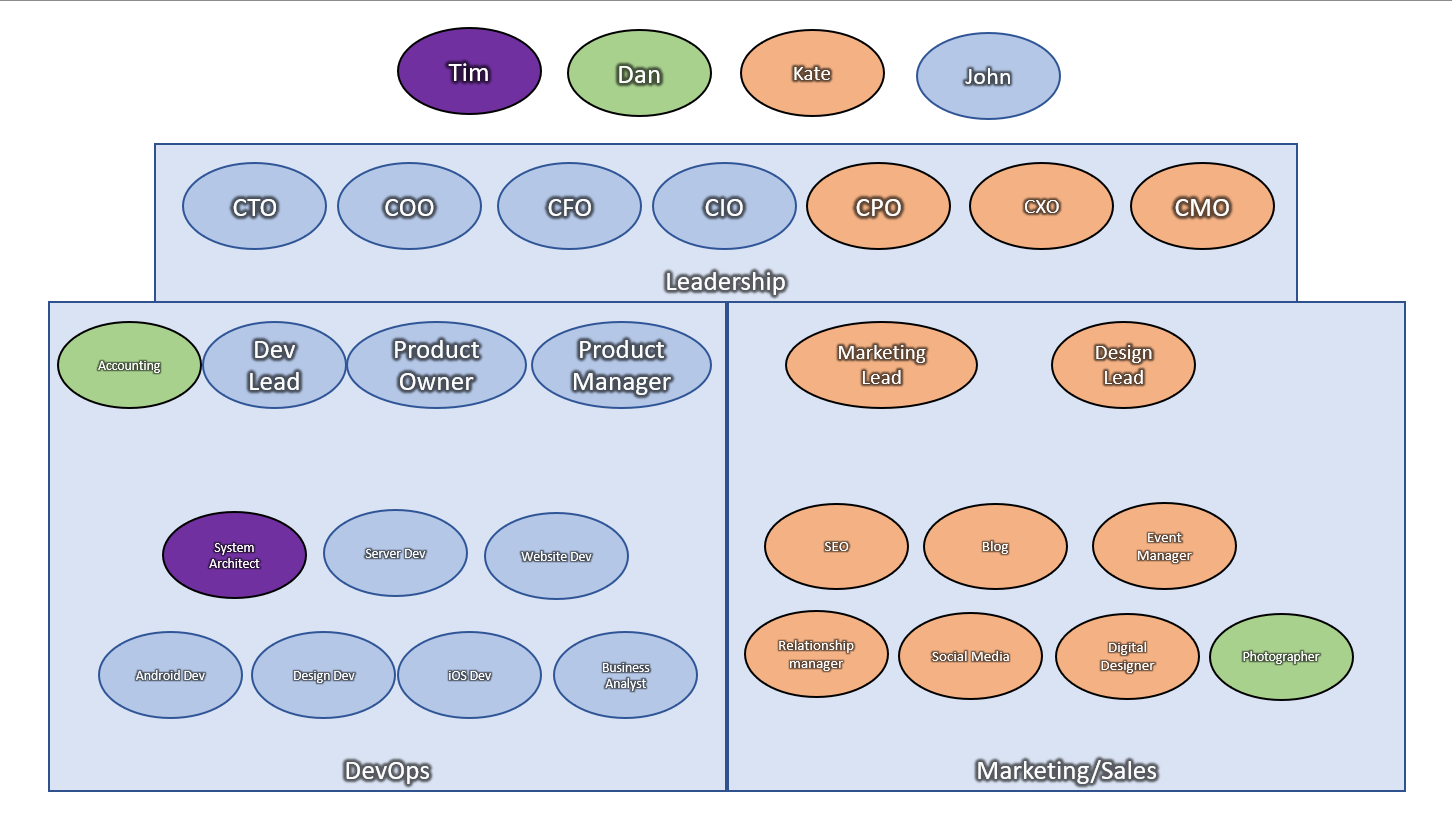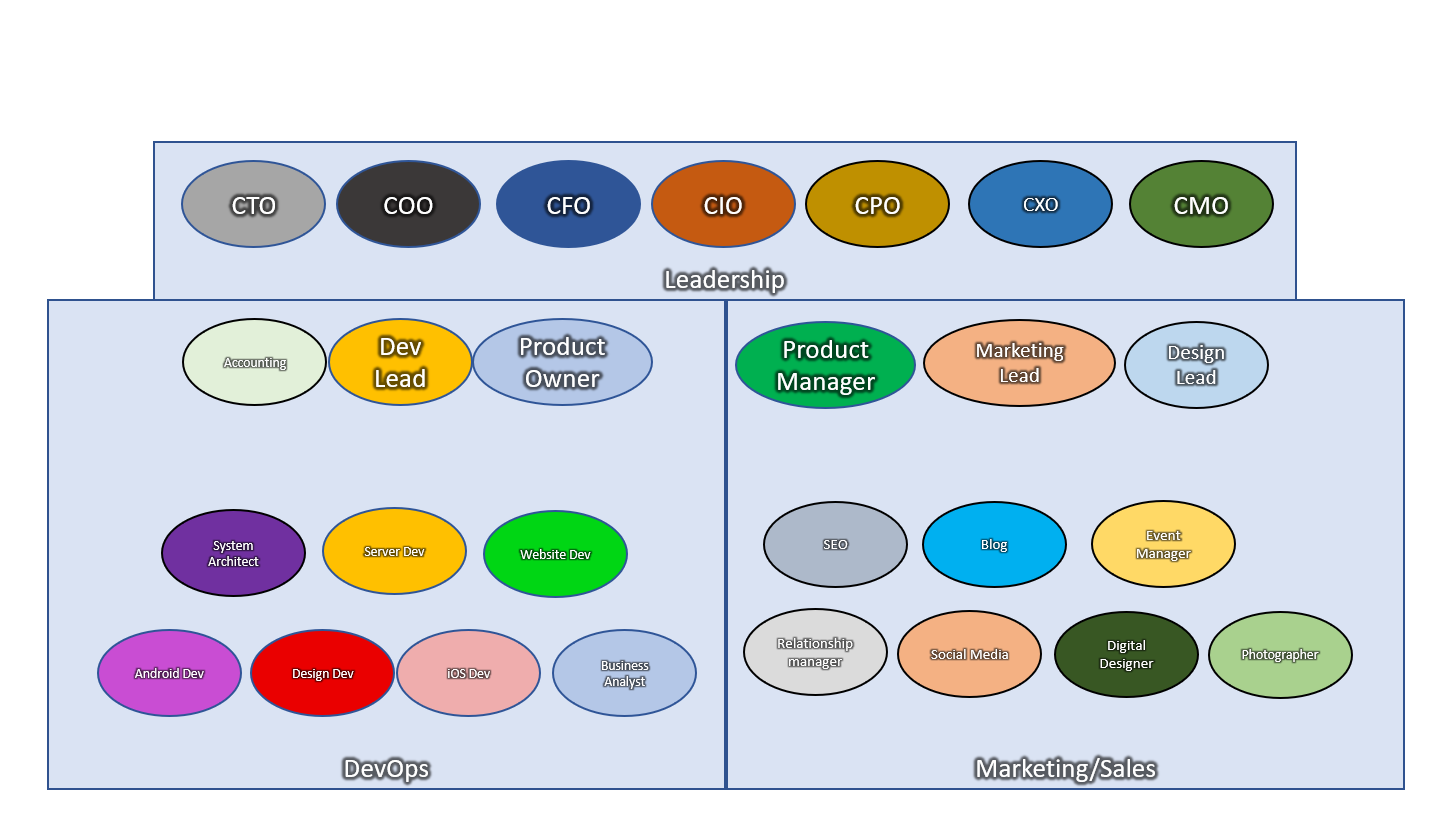Photo by Annie Spratt on Unsplash
BUILDING AN APP IS EASY, RIGHT?
Well sure, if you know what you’re trying to do. But, in general? Probably not. If you’ve landed here, you’re going to be in one of two scenarios:
-
YOU: I have/will have an idea for an app, and it’s going to be BIG! HUGE! AWESOME! We’ll have a mobile app and a web app and it’s going to change the world!
-
ALSO YOU: Look man, it’s this little tiny connection (or integration) between App A and App B, and it’s going to save our team hundreds of hours in the coming year. It’s super simple.
In either scenario, it’s going to be best to understand what a Software-as-a-Service (Saas) company looks like. SaaS companies are becoming the standard for software development and have had to reinvent themselves a lot as internet technologies become cheaper to deploy.
THE MODERN SAAS COMPANY
Any good SaaS company has a good division of labor in their “org chart”. These divisions will naturally vary from company to company, and of course some people can fill multiple roles! Let’s talk about some key players:
Product Manager
The Product Manager focuses on the market – not just the larger market of where an app sits and who it competes with, but also what people are saying. They become a filter for the “voice of the customer”, and thus, the experience that the customer is having on a platform. A Product Manager might head up the entire Marketing and Sales team.
Product Owner
Product Owners work closely with the Product Manager to turn the “voice of the client” into a technical requirement. The Product Owner will run the scrum (technical stand-up meetings) or distill user stories (technical stories about how a user is or wants to interact with technology) into requirements. Product Owners will often have developers and customer service people underneath them.
Project Manager
In a well-developed company, the Project Manager will form the third leg of the triumvirate that keeps a SaaS company moving. Their job is to manage timelines, expectations, and structures around delivery. Larger SaaS companies are constantly working on small, medium, and large projects, so a Project Manager becomes essential. In smaller SaaS companies, the Project Manager role may be evenly split by the Product Owner and Product Managers.
CAN WE BUILD THE APP YET?
Not quite. I’m going to trust that you understand the Sales and Marketing teams, but we need to spotlight a few more on the DevOps (the coding) side of things. These can be confusing, so we’re going to use a vehicle as an analogy.
Systems Architect
The fundamental structures that your app lives on will change everything about how it’s used and how it behaves. To use our vehicle analogy, a Systems Archtitect is the guy who designs the chassis of the vehicle. Building a tractor-trailer? Well, a big beefy steel frame is what he designs. Making an Indy car? Lightweight composites and space-saving chassis here.
Back-end Developer
This lovely individual does everything under the hood. They build the servers, the logic, anything that’s ugly and makes things function. In the world of cars, this guy is building the engine and the transmission and figuring out how they fit inside the chassis that the Systems Architect designed. No small feat!
Front-end Developer
Yup, development is so expensive that it usually requires a front-end developer and a back-end one (Full-Stack Developers can do both front- and back-end, but always have a preference!). The front-end is critical to the user experience, and worth splitting off on its own. They are the ones who build a webpage or design the mobile app. On a car, this is the team that designs the body style on the outside or the feel of the seats in the cab.
SO, IS THAT EVERYONE?
That depends on what you need to accomplish! Every app needs a different team, depending on their business plan.
With the pictures above, you can see how a proper SaaS company needs to build out their divisions of labor.
BUT IT’S JUST A SMALL INTEGRATION
Absolutely. It IS small compared to a full-scale app. However, many of the same roles are needed, including:
-
Project Manager
-
Product Manager
-
Product Owner
-
Systems Architect
-
Back-end Developer
-
Front-end Developer (if it has a webpage to interact with)
To integrate Small App A to Small App B, it still takes the talents of all of these individuals. When a client walks through this process, a Project Manager will take lead in getting that company in the door. The Product Manager will validate many of the concerns, and the Product Owner translates those concerns into technical requirements. The Project Manager will keep the client up-to-date on how things are going in development (where the Systems Architect and Developers are hard at work). The Product Owner will be sure to get technical questions posed, resolved, and tested. Only then can an integration be delivered.
Now that you know more about app and integration development, look for our post next week about pricing your app or integration!




